While it will almost certainly fall short of that in 2017 – to the end of November, its 73,325 registrations were down 1.9% on the same period a year earlier – it is in the context of an overall market down more than 5%. Škoda’s share of that market increased to 3.07% in the period (up from 2.97% a year earlier), while registrations at rivals Ford and Vauxhall fell 8.7% and 22.3% respectively.
However, in Europe the brand is proving even more successful, up 6.7% to 590,211 by the end of October. Could that success suck supply from UK dealers in 2018?
Škoda UK brand director Duncan Movassaghi said: “There’s an overall global demand for Škodas and I’m thinking of particularly Europe, because that’s really where there’s a market.”
By any measure, Škoda has been a success story in the UK. With the exception of 2015, it has increased registrations every year since 2008, reaching a record 80,372 units in 2016.
While it will almost certainly fall short of that in 2017 – to the end of November, its 73,325 registrations were down 1.9% on the same period a year earlier – it is in the context of an overall market down more than 5%. Škoda’s share of that market increased to 3.07% in the period (up from 2.97% a year earlier), while registrations at rivals Ford and Vauxhall fell 8.7% and 22.3% respectively.
However, in Europe the brand is proving even more successful, up 6.7% to 590,211 by the end of October. Could that success suck supply from UK dealers in 2018?
Škoda UK brand director Duncan Movassaghi said: “There’s an overall global demand for Škodas and I’m thinking of particularly Europe, because that’s really where there’s a market.”
Movassaghi added: “European demand for Škodas is ahead of supply and that’s not a bad place to be and clearly gives us the opportunity to ramp up that supply, which we’re doing.”
However, he doesn’t believe that the supply of Škodas to the UK will be affected by the weak pound in the aftermath of the Brexit vote, which has hampered the profits of importing car brands.
He said: “From a UK perspective, you’ve obviously got the currency effect and the good news there is our factories are being very, very sensible.
“They see the long-term development of the market as critical, so we’re getting good support from them. We’re not losing out as a result of the currency situation. I think we’ve got a very sensible working arrangement and we’ll get the right sales plan for the market.”
Škoda and the SUV revolution
Movassaghi, who originally joined the Volkswagen Group in 2010 and led Škoda through a period of record growth as its head of sales operations before joining Volkswagen Passenger Cars as its head of service and parts operations, would not reveal Škoda’s UK target aspirations for 2018, but he does expect the new Karoq SUV to yield 15,000 registrations in its first full year on sale.
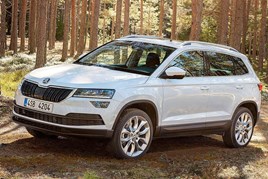
The Skoda Karoq, the latest addition
to the Škoda range, aims to take up
where the Yeti left off. Movassaghi
said 15,000 will be heading to UK
showrooms from January 2018.
The new model, which replaces the Yeti, will reach UK showrooms in January, a year after the introduction of the larger, D-segment Kodiaq.
The Kodiaq added 5,835 registrations to Škoda’s 2017 volumes to the end of November. Putting the SUV segment’s importance to Škoda into context, sales of the Octavia and Fabia dipped by more than 10% and those of the Citigo by 17.9%.
An unexpected success following its launch in 2009, the Yeti has maintained its popularity, yielding 11,233 registrations to the end of November in its run-out year – down 12.9% (2016: 12,778).
Movassaghi described the Karoq as “closer to what we have come to expect of an SUV”.
“I think it’s a car that’s going to appeal broadly across all the key channels and I think it will come down to what allocation we get because, with a 15,000 allocation, we’ll have a good offer in fleet and a strong retail offer.”
He said he would like to offer the car in the Motability scheme – an area of success for the Yeti – but added that as “an expensive channel” it would need to be managed very carefully.
Movassaghi said more than 80% of Kodiaq SUVs were being sold in the SE-L specification or above.
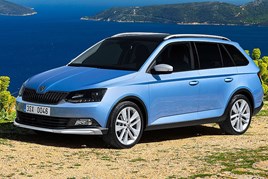
Although no match for the Fiesta,
Corsa or Polo, the Skoda Fabia generated 20,522 sales in 2016. By
the end of November this year, registrations were down 11.53% at 17,157, however.
This means an average price upwards of £28,725 and a strong dealer margin to bolster that achieved by the Superb. Registrations of the saloon and estate grew further in 2017 with registrations up 5.23% to 9,835 to the end of November (2016: 9,346).
Sales of the Karoq are expected to follow a similar trend towards higher specifications, with the SE-L 1.5-litre TSI being the range’s “sweet spot”, according to Movassaghi.
A clear shift away from diesel
Movassaghi said there had been a clear shift in customer demand away from diesel models since the dieselgate emissions-cheating scandal.
Speaking ahead of the higher taxes on diesel vehicles announced in the Budget, Movassaghi said: “As an industry, I think we’ve seen a 10 percentage-point swing in the diesel/petrol mix and [Škoda is] not tracking massively out of line with that.
“The good news is that our factory has been able to support us, so we haven’t had to build up diesel stocks, it has been managed quite well. We have a production plan to match demand.”
However, he added that Škoda may face a challenge in incentivising diesel sales to allow time for production levels to rebalance.
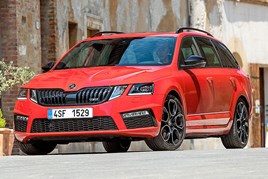
The Škoda Octavia hatchback is bigger and more practical than most in its class. Prices starting at £17,195 helped secure its spot as the brand’s best seller in 2016, with 23,068 registrations.
“Of course, diesel cars are being made as I’m talking,” he said. “They’ll be incentivised and that could be propping up the diesel mix, so, I don’t think we’re necessarily seeing the whole trend wash through yet.”
Škoda has perhaps borne less of the brunt of the dieselgate scandal than its Volkswagen parent – Volkswagen UK registrations fell 7.5% year-on-year in 2016 versus Škoda, which put on 7.6%.
According to Reuters, German unions have been applying pressure on Volkswagen to raise the cost of the shared technology that has brought Škoda such success and bring some of its production to its VW factories in Wolfsburg in an attempt to stem the tide of job cuts and rebalance the group.
To date, VW has shed 3,800 jobs in Wolfsburg as part of a cost-cutting plan targeting the “socially compatible loss of 23,000 jobs by 2020 in Germany”.
Škoda will play its part in the VW Group’s Roadmap E drive towards a more EV-dominated future – a plan which will introduce more than 80 new electrified models by 2025 – 50 purely battery-powered vehicles and 30 plug-in hybrids.
Hybrids will be introduced into Škoda’s range in 2019 and Movassaghi expressed high hopes for the Superb and a flagship EV showcased at the Shanghai Motor Show in April, which is likely to follow in 2020.
Preparing for next-generation vehicles
A corporate identity makeover introduced four years ago is now more than 90% complete among Škoda’s 128 UK dealers. It has included CitNOW video appraisal technology, touchscreen showroom displays and tablets for sales executives among its innovations.
Movassaghi said: “We’re currently looking at a plan that will fully prepare our retail network for selling and maintaining this next generation of vehicles. We’ll be ready.”
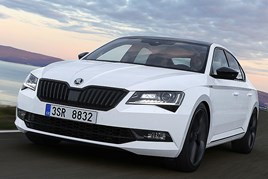
A huge sales success for the brand since its arrival in mid-2015, the Skoda Superb generated sales growth of 5.23%, to 9,835, by the end of November. Prices start at £20,050.
He did concede that the changes did not have provision for EVs written into their terms, but said those changes would be made when the new range of electrified product reached the market.
A new “structured and intensive” Volkswagen Group training programme will further help to ready the network for the shift to EVs. The course, which leads to a formal accreditation, has cut the number of days Škoda retailers’ employees have to spend away from the business from 12 to seven days following a restructure in July.
The average cost of the CI change was £100,000 in the planning stages, but many dealers have “chosen” to spend more with a new showroom or the expansion of an existing site to accommodate the seven display cars required by the change, said Movassaghi.
In the NFDA’s Summer 2017 Dealer Attitude Survey, Škoda retailers scored the brand 4.9 (average: 5.5) for the ‘required level of capital investment’ it commanded, scoring it 5.7 overall against a survey average of 6.1
Movassaghi insisted, however, that the expense of the CI had not fed a trend towards consolidation by the larger retail groups due to a lack of affordability. He said: “I don’t view it in that way at all. I think you’ve got, as in any market place, willing sellers and willing buyers.
“I look at the acquisitions that have taken place, they’ve been, certainly in the Škoda brand, some of our most profitable independent operators.”
Movassaghi said the brand’s strength, and the move to a new CI, had brought more AM100 retailers into the network.
In March 2015, the AM100’s 58th-placed retailer, Vantage Motor Group, boosted its turnover by £8 million with the acquisition of David Ian Škoda in Morecambe – its first Škoda dealership.
Among other developments currently under way in the network is RRG Group’s new 917 square-metre town centre Škoda dealership in Bolton.
Movassaghi said the brand was aiming to see its retail network’s average return-on-sales figure end 2017 at 1.5%.
Škoda currently has eight open points, largely in difficult-to-fill areas of the south-east, where rents are high and set-up costs prohibitive.
Movassaghi believes that the investment in the CI and the new additions to the range have set Škoda on track for a new growth phase.
“Škoda has had a strong growth period from going from a 2% (in 2010) to 3% brand (in 2014),” he said.
“What we’ve now got to do is push ourselves from a 3% to 4% [market share] brand and I think we’ve got the network that’s ready to do that.
“More cars come with more operational costs in terms of the variable cost of team members and so on, but the raw capacity is already there, so I’m pretty encouraged about the next phase of growth and what it means for retailer profitability.”
Eyeing growth: Used and fleet
Škoda has overhauled its fleet sales operation in an attempt to draw maximum results from its dealers’ results with small-scale fleet operators.
At the end of 2016, the brand announced plans to more than double the number of local business development managers (LBDMs).
Henry Williams, Škoda’s head of fleet, told AM’s sister title, Fleet News, that it had come to the end of a three-year plan to improve the team, adding: “What we’re doing at the moment is looking at that and saying ‘well, is it the best in the industry? If it’s not then it needs to be’ and making the investment required to develop that.”
There are now about 45 dealer-based sales representatives (up from 20 in 2016), selling to local businesses with vehicle fleets of fewer than 25 vehicles.
Movassaghi said: “Our own sales team has grown and we’re developing every aspect of our fleet proposition. It’s been a real success story, I mean our fleet share this year currently is up 0.7ppts, which is huge for one year.”
He said the brand has developed an online offering for fleets, which was signed off in the middle of October.
John French, Škoda’s head of sales operations, told AM that it had worked hard to improve the perception of its used cars.
“Traditionally, those buying a used car might have felt like a second-class citizen. We want to change that perception,” he said.
Škoda now works with Paragon to deliver vehicles that have already undergone a full pre-delivery inspection (PDI) back to retailers via an online auction system.
Customers have also benefitted from a new trial scheme that aims to reassure them about the provenance of their vehicle.
Over a three-month period, London-based Willis Motor Company featured details from the previous owners’ history on vehicles displayed on their forecourt, as well as online, giving customers an insight into more about their new car than just its mileage and service history.
Movassaghi said “there were some really good results”, but the trial had yet to be introduced on a wider scale.
Is the golden age of aftersales over?
Škoda may be driving customer convenience through digital means with its Live Tour online ‘test drive’ offering (see panel, left), but Movassaghi seems keen to consider the mood of his retailers before taking a bold step to benefit the aftersales consumer.
Asked whether the brand would encourage longer trading hours, he said: “I think you have to be very careful about driving a very strong programme to suddenly increase opening hours. You have to be very careful about the commercial viability of that undertaking.”
However, some of the lowest scores in the NFDA’s Summer 2017 Dealer Attitude Survey related to Škoda’s aftersales, the effectiveness of the brand’s field staff scoring 4.9 (average: 6.2) and dealers’
satisfaction with service plan rates and recovery attracting the same score (average: 6).
Škoda’s target-setting for aftersales was scored 4.7 against an average of 6.
Movassaghi called on Škoda retailers to identify what aftersales practices worked best for their area and implement them, but suggested that the golden age of aftersales may be over.
“I think the days where you could get 100% absorption are probably gone,” he said.
“My view is, you have to look at the whole business model, you have to be flexible and you have to adapt. Adapt to changing customer trends, product trends, social trends and you’ll succeed.”
Delivering test drives digitally
As part of its CI transformation, Škoda adopted video in its aftersales departments and is also introducing iPads to its service and sales staff.
The manufacturer underlined its emphasis on digital customer tools by the addition of the Škoda Live Tour in May this year.
Live Tour uses cloud-based conversational technology to bring “the real retailer experience online”, it said.
Using live video streaming on Škoda’s website, customers are connected to a host – based at a newly established Live Tour centre at the Volkswagen Group’s UK headquarters in Milton Keynes – who uses a mix of smartphone camera and static cameras to showcase the details of the cars. The host can assist with the configuration of a vehicle and also request an appointment for a test drive in person at the customer’s retailer of choice.
Unusually, however, Škoda has yet to develop an online retail offering.
Instead, Movassaghi said he saw Live Tour as a lead generator capable of delivering 1,000 test drives to dealers each year and improving convenience for customers.
He said: “What I guess that’s done is extended opening hours versus our typical retail offering. We run Live Tour until half nine at night, it’s something you can obviously access directly from home and through the weekend as well.”
Login to continue reading
Or register with AM-online to keep up to date with the latest UK automotive retail industry news and insight.


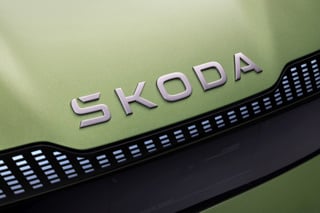
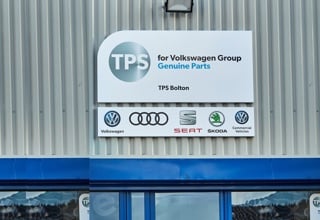
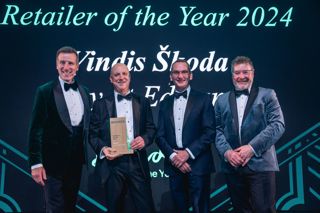
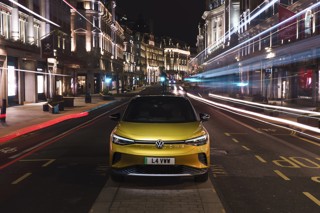














Irishboy4 - 21/02/2018 09:02
All the hyperbole written above makes no mention of the Dieselgate scandal that is still hanging over VW group. They have either paid our or set asdie $44 billion for approx. 430,000 cars in the USA, in the UK 1.1 million were affected and nothing has been paid in compensation. Additionally the CEO of VW USA was jailed for seven years, here in the UK no one from VW has been arrested as yet.